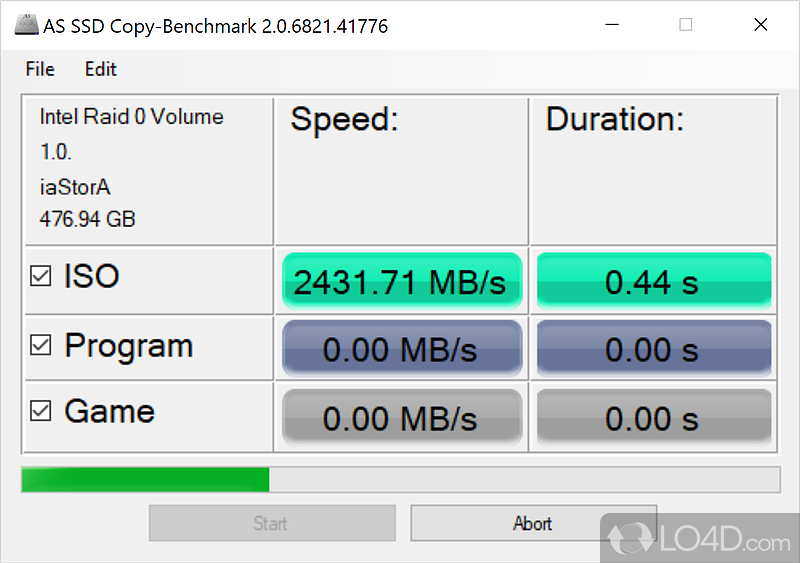
For example, write tests that have small ranges will not use the internal parallelism of the NADA chips. Besides, as for Synthetic tool, Random Write performance will be various depending on the test range. This is also the speed the drive reads data from non-contiguous memory spaces.Įvery measurement mentioned above will have different results on the same SSD due to the various systems.įor instance, the report of IOPS will be different due to the queue depth, data block size, the tradeoff between read and write operations. ☞ Random Write speeds reports in IOPS showing the speed the drive completing tasks such as web browsing, compression files, loading applications. This is the speed the drive reads data from non-contiguous memory spaces. ☞ Random Read speeds, reported in Input/output Operations Per Second (IOPS) which is the speed of SSD complete tasks like browsing web, loading application, starting PC. The time is the drive writing data to sequential memory spaces. the speeds show the time SSD finishes the task like backing up document. ☞ Sequential Write speeds report in MB/s. This is the speed at which the drive can read data from contiguous memory spaces. This shows the speed of SSD finishing the task such as accessing large files, game level loading, and some types of game play. ☞ Sequential Read speeds are reported in. Due to all SSDs work fast there is small difference between SSDs.
#As ssd benchmark install
With this tool, you should install applications and run them, the performance is recorded. This tool is much more realistic than Synthetic.Īpplication-Based Tool is different from the two tools mentioned above.
#As ssd benchmark full
It can record the time it uses to complete a full trace on a particular system configuration. Trace-Based tool is a recording of a real Input/ Output requirement from a real-world process such as running Microsoft PPT, Windows Media Center. Some Synthetic tools enable users to assign Sequential or Random data access patters. No matter which one it is, the performance of SSD will be affected due to the difference in firmware design, DRAM cache, NADA components, and controller technology. Test data is either Non-Random or Random. Synthetic tool imitates the stress that a drive may experience during different kinds of workloads using patters. There are 3 main types of benchmark tool include: Synthetic, Trace-Based, Application-Based.
#As ssd benchmark Pc
Because there are many factors that will affect your test results such as PC configuration, options made by user in the tool. It may be confusing for you to pay attention to which tests. There are different benchmark tools in the market and they can provide various reports. Then you must have a malfunctioning trim command. For instance, if you benchmark your drive and it has poor write performance. Usually, it reveals the problem of your SSD. Together with this information, you can know whether your drive needs a firmware upgrade.īenchmark tool determines the speed of your drive. It can offer insight into how many writes it already absorbed, how long until it fails and the firmware number. Why Need SSD Benchmark ToolĪ SSD benchmark tool can tell you something which you may not know.
#As ssd benchmark software
There is much free software you can download to benchmark your own disk. The purpose of the process is to get the fighters in MBps that can summarize the speed characteristics of a disk.

SSD benchmark is the process of running software which can accurately help you measure transfer speeds under different disk access scenarios such as sequential, random 4k, deep queue depth.


 0 kommentar(er)
0 kommentar(er)
